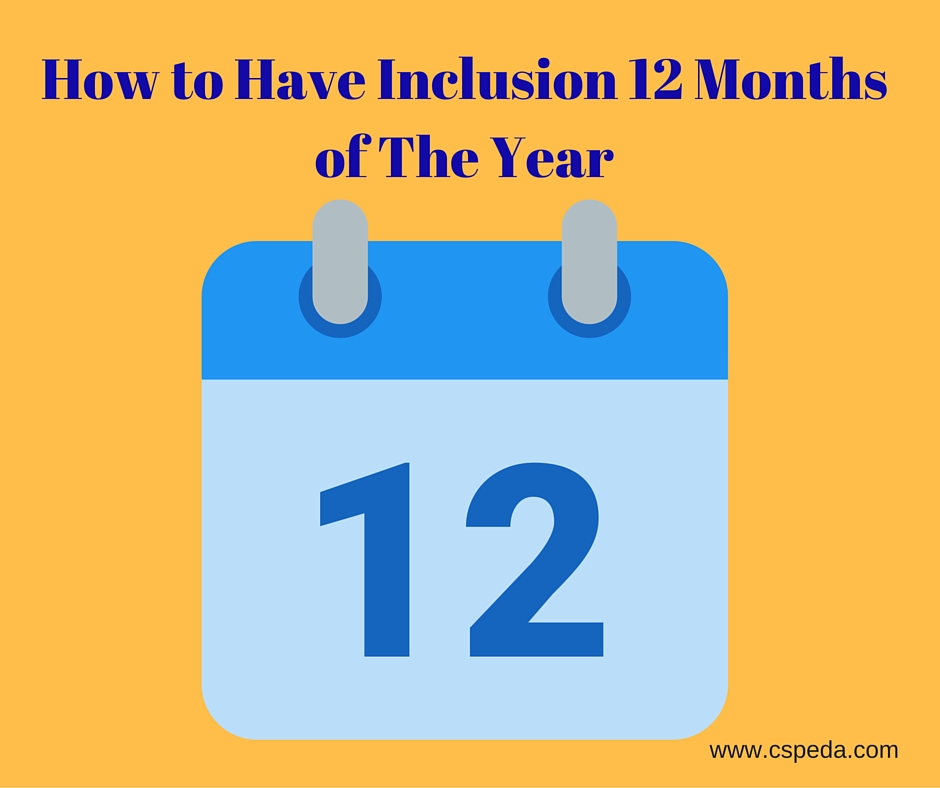How to Have Inclusion 12 Months of the Year
The summer months do add another spin for parents, don’t they? Ask yourself, what would my child be doing over the summer if he or she did not have a disability? Going to soccer camp, doing satisfying volunteer work, participating in the library’s summer reading program, enjoying scout camp, creating memories on family outings, or having a paid job? Then that’s what your child could be doing!
How many parents advocate for their child to be included in typical general education classrooms, but then fill up the child’s summer with hippo-therapy, music therapy, occupational therapy, specialized sporting events, and/or segregated camps? Do you see the mixed message? If we expect schools to support our children with typical-aged peers in general education classrooms, why wouldn’t we expect the same in community organizations? Why wouldn’t we build relationships with parks and recreation, libraries, camps, museums, etc., so children with disabilities experience typical summertime fun with children who do not have disabilities? Does inclusion only apply to nine months when our kids are in school?
Families can also take advantage of the time summer gives us for fun, and it doesn’t have to cost anything: take evening walks, have a family game night, invite a friend to spend the night, do sidewalk chalk with neighborhood kids, etc. As a parent, you can replace “special” (segregated) lessons, activities, and events for your child with typical and inclusive opportunities. There are many karate instructors, scout leaders, camp counselors, coaches, dance teachers, and others who are more than willing to include children with disabilities in their activities.
Teachers and therapists can also play an important role in developing or expanding community activities for students who happen to have disabilities. Educators and families have already discovered what works and doesn’t work for a particular child. Think of the effective supports that work in school: peers becoming friends, knowing the child’s interests and dislikes, strategies for helping a child adjust to changes in schedules, etc. These ideas can be shared with staff of community organizations, religious groups, camp counselors, etc.
In classrooms, many school therapists work alongside teachers and provide integrated therapy. Why couldn’t this happen in community activities? A speech therapist could be an extra adult to assist at the library during summer reading activities. A physical therapist could team up with the park and rec coach so all kids can play together. A 4-H leader and another adult could pair up and organize a trail ride for all would-be cowboys and cowgirls.
There are communities where this is happening; it can happen in yours. Be a part of the change so students with and without disabilities will reap the benefits of inclusion 12 months of the year!
All my best to you,
Charmaine
